If you are one of these new “Hybrid Shooters” what is the best RF lens that will let you do both really well?
The answer ends up being pretty simple but for the sake of argument, let’s run down a list of possible candidates before we announce the “winner”.
Canon RF 24-70mm f/2.8 L IS USM
Street price: $1,999 USD
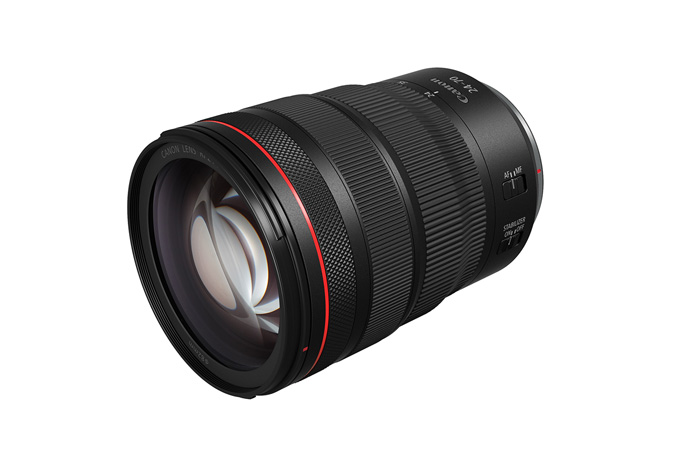
The RF 24-70mm is a great lens for photo and video. It has built in IS which becomes Hybrid IS on the EOS R5, R6, and R3, and it has a fast constant f/2.8 aperture to go along with a very convenient 24-70mm focal range. In addition to all that this lens has been designed to reduce focus breathing and is nearly parfocal. At 24mm a small amount of focus breathing is evident, but at 70mm focus breathing appears virtually nonexistent.
Features like a lack of focus breathing are things that will excite videographers looking for a lens that can give them a high end look without breaking the bank.
As for photography the constant f/2.8 standard zoom is a stalwart lens that has stood the test of time. Lenses of this type were first introduced by Canon in the mid 1980’s and have been successively iterated on and improved ever since. It’s fair to say that Canon is very good at making these lenses by now and this one is no exception. The total package with built in OIS (the first Canon f/2.8 standard zoom with IS built in), fast USM focusing, the enhanced video performance, and the super sharp optics mean it is one of the best hybrid shooter lenses on the market. It’s one flaw is that wide open at 24mm it is a smidge softer in the corners than some of the competition. But, the lenses that are sharper at 24mm don’t have built in IS… So, if you absolutely must have every last pixel of resolution just stop down a little… Yes, logical behavior is sometimes necessary in lieu of nonstop complaining.
Anyway, it’s a great lens that ticks a lot of boxes at a very high level of performance and there’s no doubt in my mind that it is a great option for an RF mount hybrid shooter.
Canon RF 24-105mm f/4 L IS USM
Street price: $1,099 USD
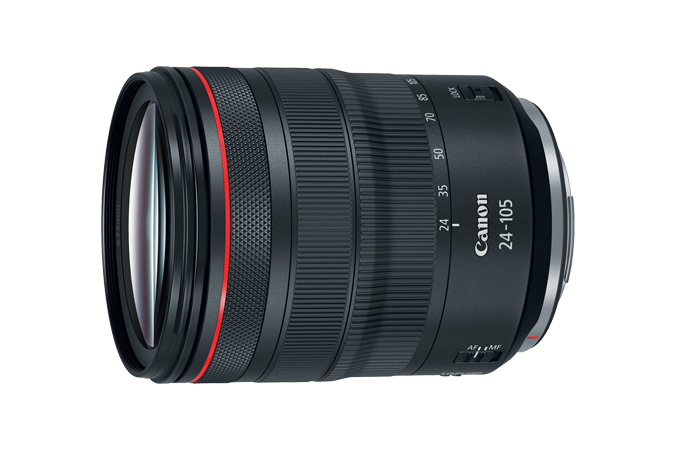
Of course the RF 24-105mm f/4 L is going to get a lot of consideration from many hybrid shooters due to the price and expanded zoom range. It is a full $900 cheaper than the RF 24-70mm f/2.8 but is also constant aperture zoom with built in stabilization.
For video shooters I think this lens is darn near perfect. It is more convenient than RF 24-70mm f/2.8 L and a lot cheaper but otherwise pretty much the same on a 4k capable camera.
For photographers I think this lens is slightly more compromised. It is a convenient range but usually if you want to get creative with background blur and all that the f/2 or f/2.8 L lenses are a bit nicer. Plus, it seems like f/4 is still not quite good enough in indoor light especially if you need to stop movement.
The really nice thing about this lens is that in theory you can use just this lens to cover a whole event like a wedding. From photo to video you’d never have to switch lenses, heck, stick a couple batteries and memory cards in your pocket and you don’t even need a bag of gear, just show up with this and call it done. It’s really that convenient.
Canon RF 28-70mm f/2 L USM
Street price: $2,999
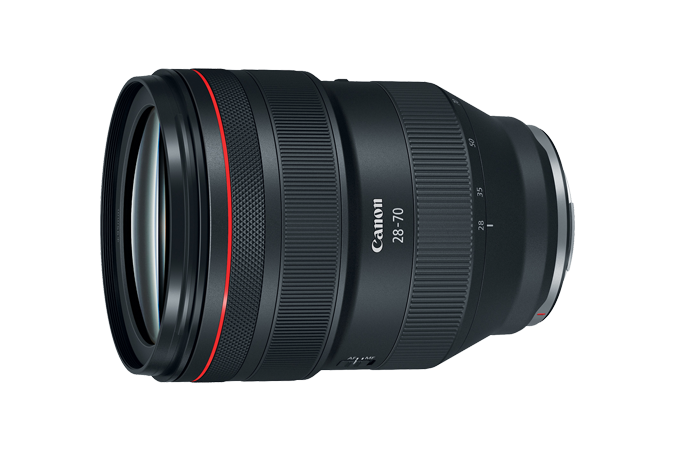
Can’t make a best of RF list of any kind and not include the RF 28-70mm f/2 L. That said, it is big, heavy, and does not have in lens stabilization.
While the RF 28-70mm f/2 is rated for 8 stops of stabilization on the R5 and R6 (and 9 stops on the forthcoming R3) it provides 0 stabilization on the R and RP. It is definitely stabilized in video, but not quite as well stabilized as the lenses I have that have IS built in. That hybrid system may not be as well rated for photo but it seems better for video…
And that brings up the fact that as tempting as it is to want to use this beast for video it is not quite a video oriented lens. The size and weight make for a long day of shooting if you are working hand held or on a gimbal.
And if you are on a gimbal you’ll have to pony up for a bigger gimbal that can can handle this beast’s immense gravity.
Obviously it’s a great lens for a wide range of situations in stills photography. It is particularly great in low light.
It may not be the hybrid shooter’s most practical choice, but it can work for the purpose since the IBIS and focusing are so solid with it.
Canon RF 24-240mm f/4-f/6.3 IS USM
Street price: $899
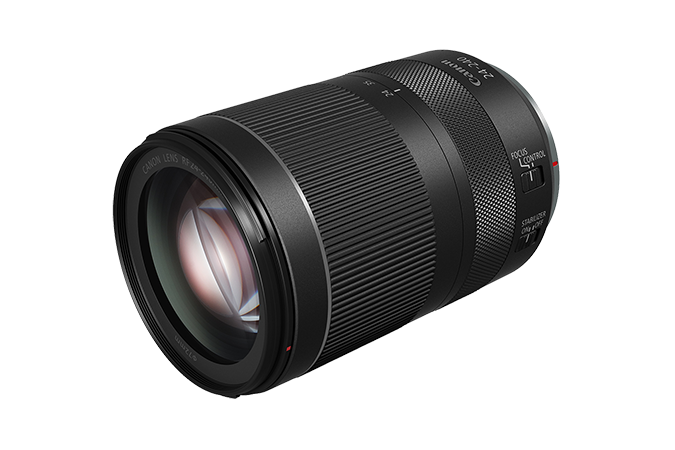
Next up is the RF 24-240mm USM. While L lenses often make having your cake and eating it too their modus operandi, this lens sacrifices a little to bring pretty good image quality and convenience in a more accessibly priced package. I wasn’t expecting a whole lot from this lens but after using this lens for video mounted on my gimbal I came away feeling like it works for professional use.
You might be tempted to dismiss this lens but don’t do so without reading this first. Obviously it has a fairly small maximum aperture compared to the other RF L lenses on this list, but is still a very workable f/4 to f/6.3. The interesting thing is that at 104mm it maintains at f/5.6 .Beyond that it holds at f/6.3 the whole way from 105mm out to 240mm. That’s a nice trick because it means you can zoom from 105mm to 240mm as if it is a constant aperture lens.
One nice thing about this lens is that it does have a Nano USM motor. The Nano USM focuses great for photo, but it’s most impressive when shooting video. It has a nice steady and quiet focus action that results in professional looking video footage.
A feature of the lens I don’t see mentioned a lot is that it is close to parfocal and has minimal focus breathing through much of the range (breathing is worst on the wide end). Doesn’t matter much for photography, but for hybrid shooters who like to zoom while recording it’s a cute addition to the lens that gives it more cachet for video use.
In terms of image quality this lens is close to as sharp as the RF 24-105mm f/4 L in the range of 50mm up to about 150mm. So, you’re not losing much if any resolution with this lens compared to the RF 24-105mm L in the middle of the range. The main downfall of course is that at 24mm it is massively corrected for distortion. These corrections cause low resolution in the corners at 24mm up to about 35mm or so. Once it is zoomed past 35mm the image gets much sharper in the corners.
Here’s the thing though, if you slap this lens on a Super 35 sensor, or if you use the crop mode on the R5, you can get around those weak corners and still enjoy a 10x zoom range at 4k resolution.
The hybrid IS is very usable on the R5 with this lens attached. It falters a bit as it is zoomed in but at the wider end it’s able to stabilize quite a bit of movement.
Canon RF 14-35mm f/4 L IS USM
Street price: $1699
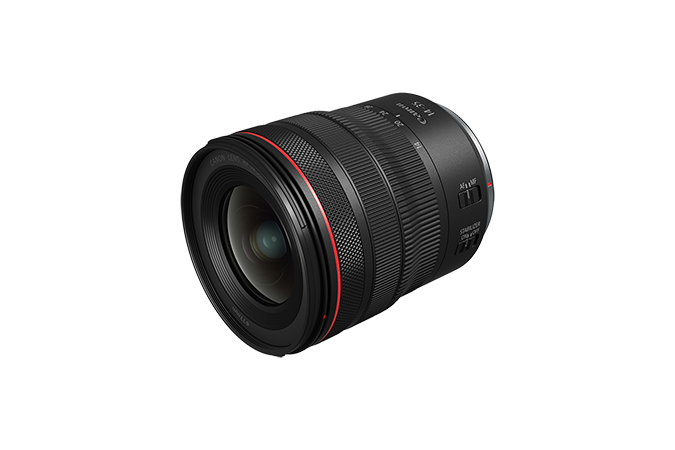
The newest addition to the RF family as of writing this lens is a compelling option with its never before seen zoom range at a constant f/4 aperture that still manages to be contained in a compact and easy to handle body. While it does rely heavily on corrections that affect corner sharpness at 14mm, the lens is still pretty sharp in the corners even on the EOS R5. And by pretty sharp, I mean one only really notices issues pixel peeping images at 100% view on a monitor. Prints might be another story but it’s more than good enough for a digital workflow, which of course video absolutely is.
For video this lens actually makes a lot of sense, it may seem very wide at 14mm, perhaps too wide for most video footage, but the nice thing about it is that on the R5 you can easily snap into 4k crop mode and now you’ve suddenly got excellent sharpness across the frame with a much more normal crop focal range of 22.7mm to 56.7mm. Those are very usable focal lengths that come fairly close to fully covering the standard focal lengths of 24-70mm. If this was a 14-40mm lens I might recommend it over the 24-70mm for a hybrid shooter. 40mm would be 65mm on crop 4k which is plenty close enough to 70mm… Look at it this way, you can basically shoot from 14mm all the way to 56.7mm with oversampled 4k on the R5 with this lens. That’s an insane range to have at your fingertips in 4k resolution.
The lens has built in IS so hybrid stabilization will be activated on the R6, R5, and R3 which is virtually guaranteed to be excellent on this lens considering the wider end of the focal range tends to work best with all stabilization methods.
All in all this is a nifty option for a hybrid shooter who might want to get creative with some ultra-wide shots then snap into 4k crop mode and shoot some video in the middle of the standard range with exceptionally high image quality.
Which one is the winner?
It’s a super tough decision because the lenses on this list are all great, but for a hybrid shooter I have to pick the RF 24-70mm f/2.8 L IS USM as the must have lens. It’s built tough, has world class image quality and IS, is weather sealed, and is a proven focal length for photography and video. On top of that it has been engineered to deliver features many people want in video like being parfocal across the zoom range and having 0 focus breathing at 70mm. The fast aperture and close focusing distance will let you zoom in for tight closeups and blow the background out with that 3D look that screams cinema quality. The thing I really like though is this lens does not rely heavily on corrections, I think that is important for a high end look. After years of looking at photos I can tell when an image is digitally corrected vs 100% pure optical goodness.
The first runner up is the RF 28-70mm f/2 L IS USM. In terms of build RF 24-70mm f/2.8 is smaller and lighter than the RF 28-70mm f/2 L while still having that L build quality. The 28-70mm f/2 is also the only real competitor on this list for sheer image quality… I’m sure the RF 24-70mm can hold its own though. For a hybrid shooter I feel that the RF 24-70mm f/2.8 is just too convenient all around to be denied even by the image quality of the RF 28-70mm f/2 L and the allure of that f/2 aperture.
The RF 24-105mm f/4 L is also a strong contender but for image quality I think it falls short of what the RF 24-70mm can do. There have been too many times at a wedding or something where they cut the lights and I’m thinking, yep, this is why I have the RF 28-70mm f/2 L… f/4 is just a little too dark plus the 24-105mm L suffers a bit in terms of sharpness wide open.
The last runner up is the RF 24-240mm, it’s a fine lens for the money and the video you can get with it on a tripod or gimbal zoomed all the way in to 240mm is very cool. BUT, the image quality is iffy at 24mm and for photo I wouldn’t want to rely on this lens for large group shots where the heavy digital corrections at the wide end could potentially mess up a great photo. I personally don’t like thinking about whether I should frame a shot a certain way to avoid blurring the corners and edges, that’s annoying. However, if I had to pick a budget option, I’d probably go with this lens. The problem is, the cameras I’d use it on are all pretty expensive so it almost seems silly to talk about a “budget” lens at that point.
Ultimately one lens rises to the top, the RF 24-70mm f/2.8 L is the #1 must have for the RF mount hybrid shooter.
A rumor
In a recent review of the RF 28-70mm f/2 L posted to dpreview.com it was mentioned that a forthcoming Cinema version of the RF 28-70mm f/2 may be in the works. The cinema version is reported to be fully corrected for all the video stuff people love such as being parfocal and having 0 focus breathing. So it looks like a cinema version of the RF 28-70mm f/2 L might actually be in the works which would be amazing. Would that become the definitive hybrid shooters lens?? It’s hard to say. If they go with what Canon has done for their cinema lenses in the past I would say no, probably not. Those lenses have zoom motors in them and stuff that photographers don’t need. But if they continue with this hybrid mentality, there’s a possibility it could also be used for photography I would think.
Conclusion
I could go on with the lenses but I think these are the best options for most hybrid shooters. Of course, the fact that most of the new RF lenses have good AF and good IS means they’re good at doing both video and photo across the board. But IMO the above lenses are the best in terms of convenience, price, and performance.
You probably noticed that I did not include any of the telephoto zooms on this hybrid shooters list. It all depends on the situation but I feel any hybrid shooter is going to want the wide end of the spectrum above all. Anyway, that’s just my opinion, of course you can always opt to have 2 lenses in which case the RF 70-200mm f/2.8 & f/4 would both be a great second lens to have in addition to the above lenses. In fact I have commented that the f/4 version might be a little too good. It almost looks better than the f/2.8 L. The RF 100-500mm would also be a nice add for a hybrid sports or wildlife shooter.
No, I did not mention the RF primes. When it comes to being a hybrid shooter I feel being able to adapt to different situations at a moments notice is absolutely key. A zoom lens goes a long way to enabling a hybrid shooter to handle the double workload of photo and video.
Hope this article helped you find out which lens is the best for your situation, if you have a question, comment, or suggestion, feel free to leave it in the comments below.
